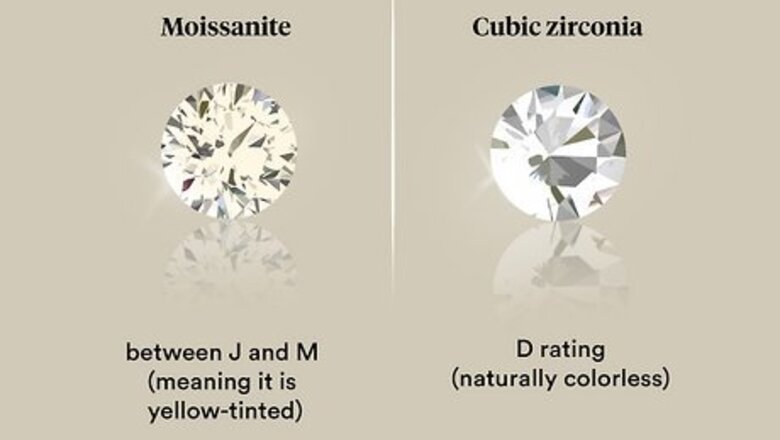
views
- Moissanite is a better choice for rings, since it’s more durable than cubic zirconia.
- Cubic zirconia is a great option for necklaces or earrings, especially if you’re on a budget.
- Moissanite may have a slight yellow-tinge, while cubic zirconia is almost always colorless.
- Both stones have very few imperfections and tend to have colorful sparkles in the light.
Key Differences
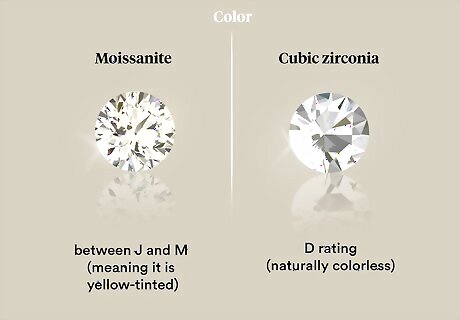
Color Jewelers grade diamonds on a scale from D to Z (D being colorless and extremely rare, Z being completely yellow). Moissanite is available in a range of colors, but usually falls between J and M (meaning it is yellow-tinted). Cubic Zirconia is naturally colorless, meaning it almost always gets a D rating. Moissanite is available in the D to F range, but it almost always has a slight tinge of color throughout.
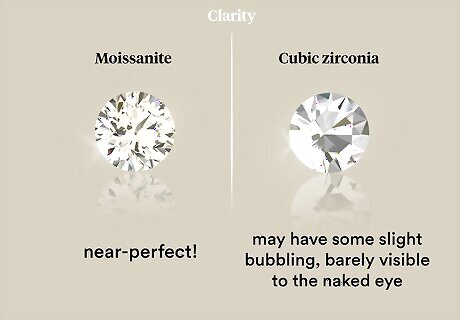
Clarity While even the most expensive natural diamonds may have imperfections, moissanite and cubic zirconia are lab-grown, meaning they will have far fewer imperfections that the eye can see. Maisonette tends to be near-perfect, while cubic zirconia may have some slight bubbling that is only barely visible to the naked eye.

Brilliance When rating the brilliance of a diamond, color flashes (also called “fire”) are the gold standard that many people look for. Moissanite tends to have more color flashes than a diamond does. Cubic zirconia is similar, although it is much less brilliant than a natural diamond. The flashes of color on a stone is the best way to tell cubic zirconia from a diamond. Cubic zirconia tends to get dull quickly. You may need to clean cubic zirconia more often than moissanite.
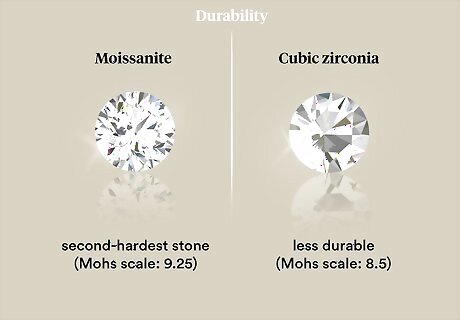
Durability Jewelers use the Mohs scale to determine how hard a stone is. Diamonds are a 10 on the scale, meaning they are the hardest. Moissanite is the second-hardest stone, coming in at an astonishing 9.25, meaning this stone is durable and hard to break. On the other hand, cubic zirconia is around an 8.5 on the scale, meaning it can (and likely will) get scratched over time.
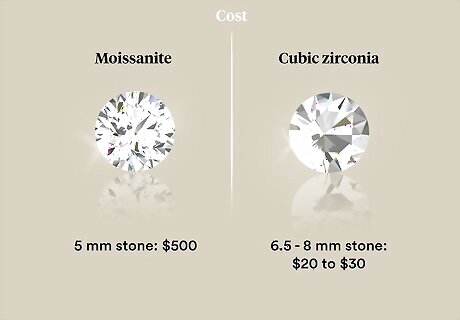
Cost Both moissanite and cubic zirconia are much cheaper than natural diamonds. For about $500, you can buy a 5 mm moissanite stone, which is comparable to a 0.45 carat diamond. Cubic zirconia is even less expensive: for $20 to $30, you can purchase a 1 to 2 carat stone (a diamond of similar size would cost upwards of $2,000).
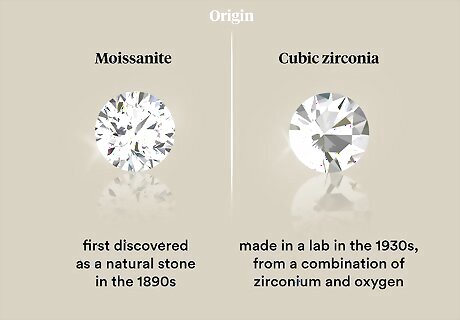
Origin Moissanite was first discovered as a natural stone in the 1890s. Now, however, it’s almost always made synthetically in a lab. Moissanite is a mixture of silicon and carbon. Cubic zirconia was made in a lab in the 1930s, and it’s made from a combination of zirconium and oxygen. When moissanite was first discovered as a natural stone, it was found in a meteor crater. Since it probably originally came from outer space, many know it as the “space diamond” or “stardust diamond,” even though modern moissanite is almost always lab-created.
Which one is better?
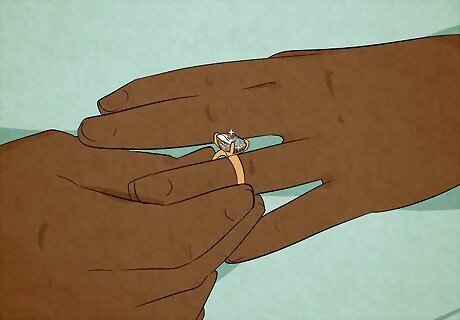
Moissanite is better for rings. Since moissanite is almost as durable as a diamond is, it’s a great choice for engagement rings or wedding bands that will be worn almost every day. Even though this stone may be slightly yellow-tinted, a moissanite ring is much more likely to stay shiny, sparkly, and whole than cubic zirconia. Plus, moissanite is shinier and more brilliant than cubic zirconia, meaning you’ll get that diamond shine on your ring.

Cubic zirconia is a great option for earrings or necklaces. If you’re looking for a budget option, cubic zirconia necklaces, earrings, or pendants are a great choice. Cubic zirconia is cheap, beautiful, and expensive-looking. Plus, if you’re not wearing the jewelry every day, it’s much more likely that it will stay in great condition, even though cubic zirconia is not as durable as moissanite.
Jewelry Buying Guide

Buy jewelry from a reputable jeweler. There are tons of jewelry retailers out there, both in-person and online. Before you make any purchases, be sure you’re at a reputable jeweler that’s a member of a professional organization. To find reputable jewelers, use the American Gem Society’s Jewelry Store Search.
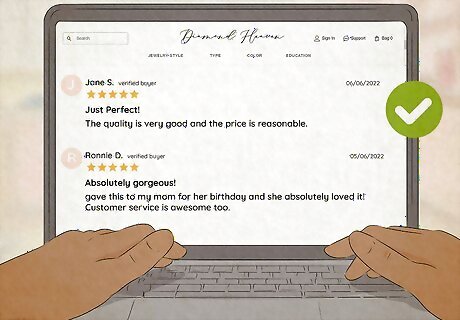
Read online reviews. Reputable retailers who know their stuff will have plenty of online reviews. Search the company online and read what other customers have to say about them. If there are a lot of negative reviews, that’s a red flag. If there are no reviews at all, that’s another red flag. Unless the retailer is extremely new, a lack of reviews could mean that they’re deleting negative reviews.

Check out the return policy. Jewelers understand that you might not be satisfied with your purchase 100% of the time. Before buying, ask about the return policy and how long you have to bring your jewelry back if you’re unhappy with it. Also ask about any warranties that may be in place.

Look at videos of the stone if you’re buying online. In the age of the internet, buying jewelry online has become very popular. However, online photos can be edited to misconstrue a stone’s color, clarity, or brilliance. Before investing in an online purchase, check to see if there are any videos of the stone. That way, you’ll have a much clearer picture of what it actually looks like in real life.














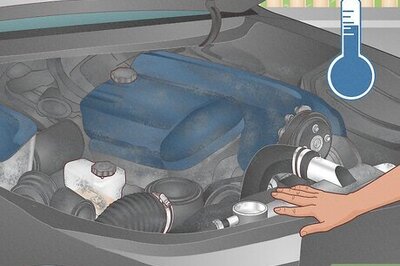



Comments
0 comment